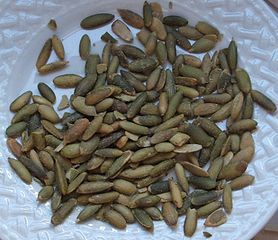 PRICE, UTAH—Timothy Riley of the Utah State University Eastern Prehistoric Museum examined coprolites from the Fremont people who lived in Utah and parts of Idaho, Nevada, and Colorado between 400 and 1350 A.D. He determined what they ate when they were at their healthiest by comparing what he found in their waste with the health of Fremont teeth and skeletons. “It looks like people who were eating a lot of maize were actually probably the least healthy. We see that a fair amount in hunter-gatherer versus agricultural populations. Hunter-gatherers tend to have seasonal nutrition stress but they don’t have long-term nutritional deficiencies the same way agriculturalists tend to,” he explained. To reinforce his message, Riley served some guests a dinner based upon the results of his investigation into Fremont meal planning—a salad of cattail and spring onion, dusky grouse with pinion nuts and Juniper berries, and venison steak with dried and roasted pumpkin seeds.
PRICE, UTAH—Timothy Riley of the Utah State University Eastern Prehistoric Museum examined coprolites from the Fremont people who lived in Utah and parts of Idaho, Nevada, and Colorado between 400 and 1350 A.D. He determined what they ate when they were at their healthiest by comparing what he found in their waste with the health of Fremont teeth and skeletons. “It looks like people who were eating a lot of maize were actually probably the least healthy. We see that a fair amount in hunter-gatherer versus agricultural populations. Hunter-gatherers tend to have seasonal nutrition stress but they don’t have long-term nutritional deficiencies the same way agriculturalists tend to,” he explained. To reinforce his message, Riley served some guests a dinner based upon the results of his investigation into Fremont meal planning—a salad of cattail and spring onion, dusky grouse with pinion nuts and Juniper berries, and venison steak with dried and roasted pumpkin seeds.

